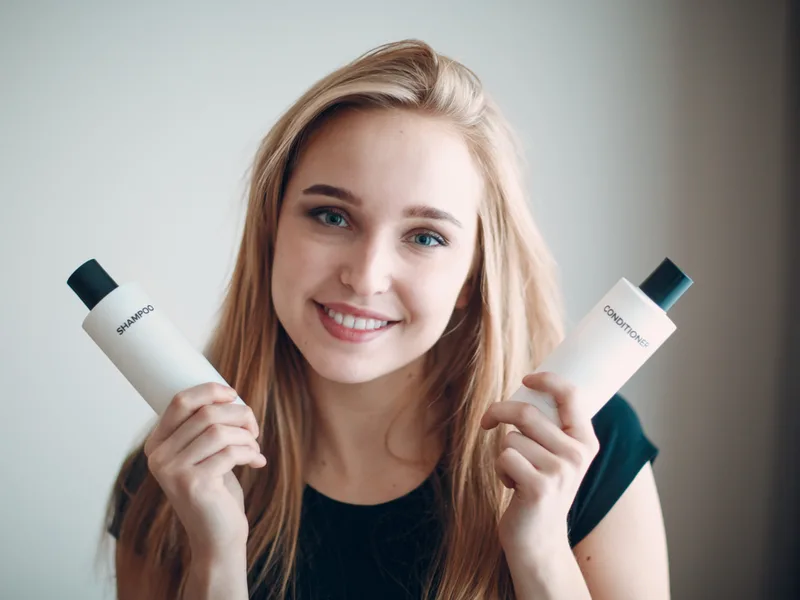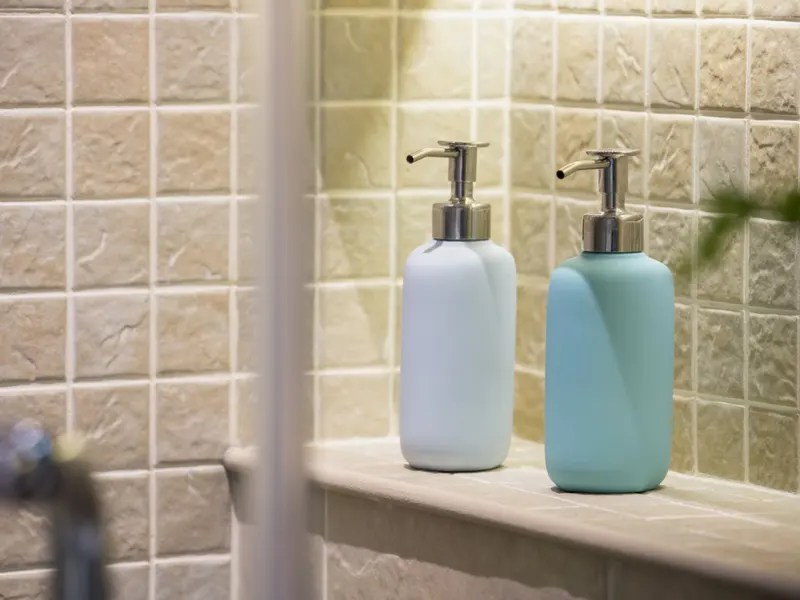Jump to:
Many people are surprised to learn there’s more than one way to wash your hair, and it’s common to wonder if you should use shampoo or conditioner first. Is one way better than another? Have you been hurting your hair by using your products in the wrong order?
The Big Debate: Use Shampoo or Conditioner First?

Max4e Photo/Shutterstock
The general recommendation for hair washing is to shampoo first and then condition. Some have found alternative methods such as reverse hair washing (aka pre-shampoo) and co-washing to be helpful for their hair. Let’s look at the benefits of each approach.
Shampoo cleanses the scalp with detergents and sulfates. Shampoo removes oil, dirt, sweat, and product build-up. Shampoo can be harsh on the length of your hair, especially if you have dry, damaged, or fine strands.
Hair conditioner is made up of natural oils, proteins, botanical extracts, and vitamins to soften and smooth the hair. The downside to many conditioners is a heavy or greasy feeling even after rinsing.
3 Methods of Shampooing and Conditioning
There are three methods of hair washing, and each has benefits and drawbacks. These include:
- Shampoo, Rinse, Condition
- Reverse Hair Washing
- Co-washing
1. Shampoo, Rinse, Condition
The traditional technique for taking care of your hair is to use shampoo first and then conditioner.
- Soak your hair and scalp
- Massage a small amount of shampoo into your scalp
- Rinse thoroughly with warm (not hot) water
- Apply a small amount of conditioner to the length of your hair without rubbing it into your scalp
- Let the conditioner sit for about three minutes
- Rinse out the conditioner with warm water
- Blot your hair dry with a towel
The above method is beneficial to most people with most hair types. But some conditioners can leave your hair feeling greasy and weighed down. One solution is to change up your routine a few times a month.
2. Reverse Hair Washing
You skip rinsing between products when you reverse wash.
- Soak your scalp and hair
- Massage a small amount of conditioner into the length of your hair
- Massage a small amount of shampoo into your scalp
- Rinse with warm (not hot) water
- Blot hair dry with a towel
Proponents of reverse hair washing say that applying conditioner first helps protect the strands from the drying effects of detergents and sulfates in most shampoos.
There is no scientific data on the efficacy of reverse hair washing compared to the traditional method. But it won’t hurt your hair or scalp. It may be worth a try if you find your hair weighed down by conditioner.
3. Co-washing
Some have skipped the shampoo altogether in favor of co-washing. Use a small amount of conditioner in place of shampoo. This method works well for uncommonly dry, curly, or textured hair.
Frequently Asked Questions

WichitS/Shutterstock
A useful hair washing routine can be simple once you’ve found the techniques that work for you.
Is Conditioner Necessary After Shampoo?
Many shampoos contain harsh cleansers that leave the strands of your hair feeling dry and frizzy. Using a conditioner after you wash helps to moisturize and smooth your hair.
Is Shampoo Necessary for Clean Hair?
Many people with curly and highly textured hair have found the co-washing method most helpful in keeping their hair soft and silky. The one drawback is that co-washing does not remove dirt and product build-up as well as traditional washing.
You can solve this problem by washing with a clarifying shampoo and conditioning normally every two weeks.
Which Shampoo Is Best?
The best shampoo for you will depend on your hair type. If you experience dryness and frizz from your shampoo, consider using a sulfate-free variety. Sulfate-free shampoo is not as harsh on your hair.
Which Conditioner Is Best?
The best conditioner for you depends on what type of hair you have and what you want from your conditioner. Moisturizing, treating heat damage, and protecting color are a few reasons to choose particular conditioners. Using paraben-free conditioners slows product build-up so you can wash your hair less often.
How Often Should You Wash Your Hair?
Washing too frequently can cause dry scalp and hair, frizziness, and breakage. Washing and conditioning with the traditional method three to four times a week is enough for most people to maintain clean, healthy hair.
So, Should I Use Shampoo or Conditioner First?
Most people can maintain their hair with a routine of shampooing, rinsing, and then conditioning. Depending on your hair goals, you may want to try reverse hair washing or the co-washing method. Neither alternative will hurt your hair, and you’re sure to love the results.
